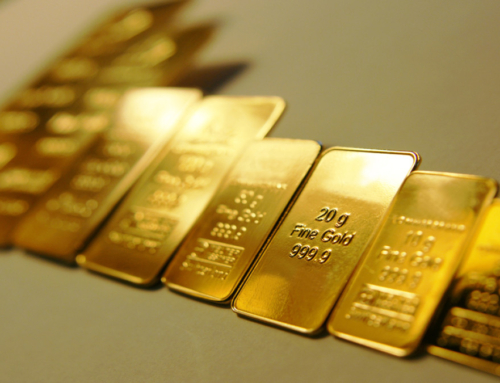One of my favorite books on the subject of trading is How I Made $2,000,000 in the Stock Market.
The book was written by professional dancer Nicolas Darvas in the late 1950s and describes how he turned a $50,000 account into over $2 million (that was some serious money back then!) in less than two years.
Darvas Box Theory
After repeated failure, he developed a somewhat systematic approach to identifying very hot stocks and a method for entering and exiting positions in these stocks.
However, Darvas also took on a huge amount of risk, which is what allowed him to accumulate his wealth so quickly.
Darvas developed what he described as his “box” theory. He essentially looked for stocks that were trading in a clear uptrend, but would occasionally consolidate within a narrow trading range.
He referred to these trading ranges as “boxes” and would look to buy when the stock would breakout above the range of the box.
He would then keep a very tight initial stop loss, which resulted in repeated whipsaws for some of his positions until they finally got moving.
His first buy would be a test buy, and if the stock continued higher, he would pile in with a sizable position.
If he didn’t get stopped out, he would typically ride the stock until it showed some sign of weakness, or until another stock caught his attention.
In other words, his strategy was a form of trend following.
How Darvas monitored the stock market
Darvas did not have charts to view as we do today. Instead, he reviewed stock prices in a weekly issue of Barron’s magazine while he was traveling around the world.
If he noticed a stock rising in price, he would then start to pay closer attention. If the stock started jumping in price and this was accompanied by an unusual volume increase, he would look for an opportunity to buy.
One particular example was Lorillard. He identified that the stock was in an uptrend in November 1957, and then trading within a range from $24 to $27. His initial purchase in this stock was at $27 ½, and he placed a sell stop at $26.
He was stopped out at $26, and then he bought back in at $28 ¾ (stocks were quoted at 1/8 point back then and up until the advent of electronic trading).
These initial purchases involved 200 shares. Darvas then noted that Lorillard traded higher and into a range from $31 to $35. He bought a total of 400 more shares at $35 and $36.50.
The stock then rose to as high as over $44, and then dropped suddenly to a low of $36 ¾ and closed at $37 ¾.
He raised his stop loss to $36 and then the stock moved higher. He bought 400 more shares at $38 5/8. He now had a total position of 1,000 shares at prices from $28 ¾ to $38 5/8. Darvas ultimately cashed out of this stock in May 1958 at an average price of $57 3/8.
His total profit was over $21,000.

This is the chart of Lorillard presented in Darvas’ book. Point B was his initial purchase. Point C indicates where he was stopped out. He then jumped back in at Point D, then made additional purchases at points E and F.
Darvas sold out at Point G even though the stock was still rising, because another stock had captured his attention and he wanted to put as much capital into it as possible. I’ll get to that in a minute.
By the time he had sold out Lorillard, he had already bought shares in Diner’s Club and made about $10,000 on that transaction as well.
EL Bruce – The stock trade that took Nicolas Darvas to another level
The stock that caught his eye and made him sell out his position in Lorillard was EL Bruce.
He began buying E.L. Bruce and he accumulated 2,500 shares in chunks of 500 shares each at prices from $50 ¾ to $53 3/8.
These purchases were based on E.L. Bruce climbing from $18 to $50 without a reaction.
Furthermore, the volume in the shares traded was rising significantly.
It then pulled back to about $43, and Darvas had it in his mind to buy if it broke above $50. After his purchase, the stock screamed higher over the next couple weeks, and then trading in the stock was halted.
Darvas had no idea that there was a massive short squeeze in the stock. He received a number of offers to purchase his shares, but he decided to hold on.
He ultimately sold out this stock at an average price of $171 per share for a profit of over $295,000.

Point A is what tipped Darvas off that something special was going on in this stock… a huge rise accompanied by a massive increase in the volume of shares traded.
Point B is where he bought the stock above $50.
After starting with about $50,000 in Fall of 1957, Darvas had now traded his account to over $300,000 by July 1958 with three big winners.
Universal Controls
It was at that time that Universal Controls caught his eye. The stock shot up from below $30 to about $36 very quickly, and this move was accompanied by a sharp rise in volume.
He started buying the stock just below $36 and once it started moving up, purchased more shares at $36.50 and then at $40. Shortly thereafter, the stock split after it hit a level of about $45.
He now had 6,000 shares effectively priced from about $18 to $22. The stock took off and by January 1959, was trading up over $100.
This caused him to raise his stop price and he ended up exiting the stock with prices from the mid to upper $80s.

Point A is where Universal Controls began to catch Darvas’ attention. He made his buys at points B, C and D. The stock split shortly thereafter, then went on a tear. He was stopped out at point E.
He made $409,000 in the stock.
Thiokol Chemical
Darvas first noticed Thiokol in early 1958 when there was a significant spike in volume accompanying its rise.
After that, the stock traded sideways for months before breaking out later in the year. Darvas jumped in at prices from about $47 to just under $50.
Then, the company issued stock rights, and Darvas went all in, purchasing 72,000 rights, which effectively gave him 6,000 shares at a subscription price of just $42, while the stock was trading in the mid-$50s.
The stock then rose to over $160 and split 3 for 1.
However, the exchange suspended the use of automatic stop orders for the stock, so he sold out in mid-1959, and made a profit of $809,000.

At Point A, Darvas notices the heavy volume traded in the stock accompanying its rise. He then buys at points B and C, and shortly thereafter, sells the shares and purchases the 72,000 rights through which he acquired 6,000 shares.
On this transaction, his cash cost was $111,000 while the value of the purchase was $350,000.
At point D his broker wired him to inform him he was up $250,000 on the position and he was tempted to sell, but he held on, ultimately exiting at point F after the 3-1 split.
Texas Instruments
After his Universal Controls trade, Darvas started to look for an actively traded stock in which to plough $500,000 of his gains.
Texas Instruments caught his eye in early 1959 and he started buying in April of that year.

Darvas purchased his initial shares at nearly $95 and finished his buying at just over $101. The book ends with the stock trading at just under $150 and Darvas is headed to Monte Carlo with trailing stops in place for over $2.2 million in holdings.
Nicolas Darvas’ remaining holdings in 1959
Darvas had two other positions when his book concludes in the latter half of 1959. These included Fairchild Camera and Zenith Radio.

Darvas entered positions in Fairchild Camera from $123 to $128. The stock was trading at $185 by the end of the book.

Darvas didn’t enter a position in Zenith until after the 3 for 1 stock split. By the end of the book he had about a 15% profit in the stock.
It is notable with these last three trades how much the stocks were already extended in price from their inital breakouts from longer term bases.
Thoughts on the Darvas box strategy
After several years of trading, Darvas ultimately developed his own “trend following” approach to trading stocks.
In other words, he bought strength and sold weakness.
In general, his stop loss appeared to be somewhat random, but by the end of the book, it is described as 10%. However, he would waive that rule if the volatility of a stock was significant enough to make that rule unreasonable.
Darvas also clearly had a big appetite for risk, trusting that his stop losses would bail him out.
He also entered positions in more of an upside down pyramid. His inital purchase was always small, just to test the market.
For instance, he might make an initial purchase of 200 shares, then watch. If the stock went higher, he would buy 400 shares at a higher price, and then maybe an additional 400 shares.
Typically, a trader will enter a position with his or her largest initial purchase, then make smaller purchases as the price rises. This is a more conservative, but still aggressive approach.
In today’s markets, it is not uncommon to see a stock gap down substantially based on bad news. I’ve seen stocks decline by as much as 50% or more, and that would be devastating to a trader with a large position.
Therefore, it’s a better idea to use a normal pyramidding approach if a trader intends to build a large position.
My last takeaway from the Darvas book is that he concentrated his positions into just two or three stocks at a time.
This is what allowed him to make such massive profits, and it is the opposite of the common Wall Street wisdom, which is to diversify.
If you have an appetite for risk like Darvas, perhaps this is the type of strategy you may want to employ.


Leave A Comment